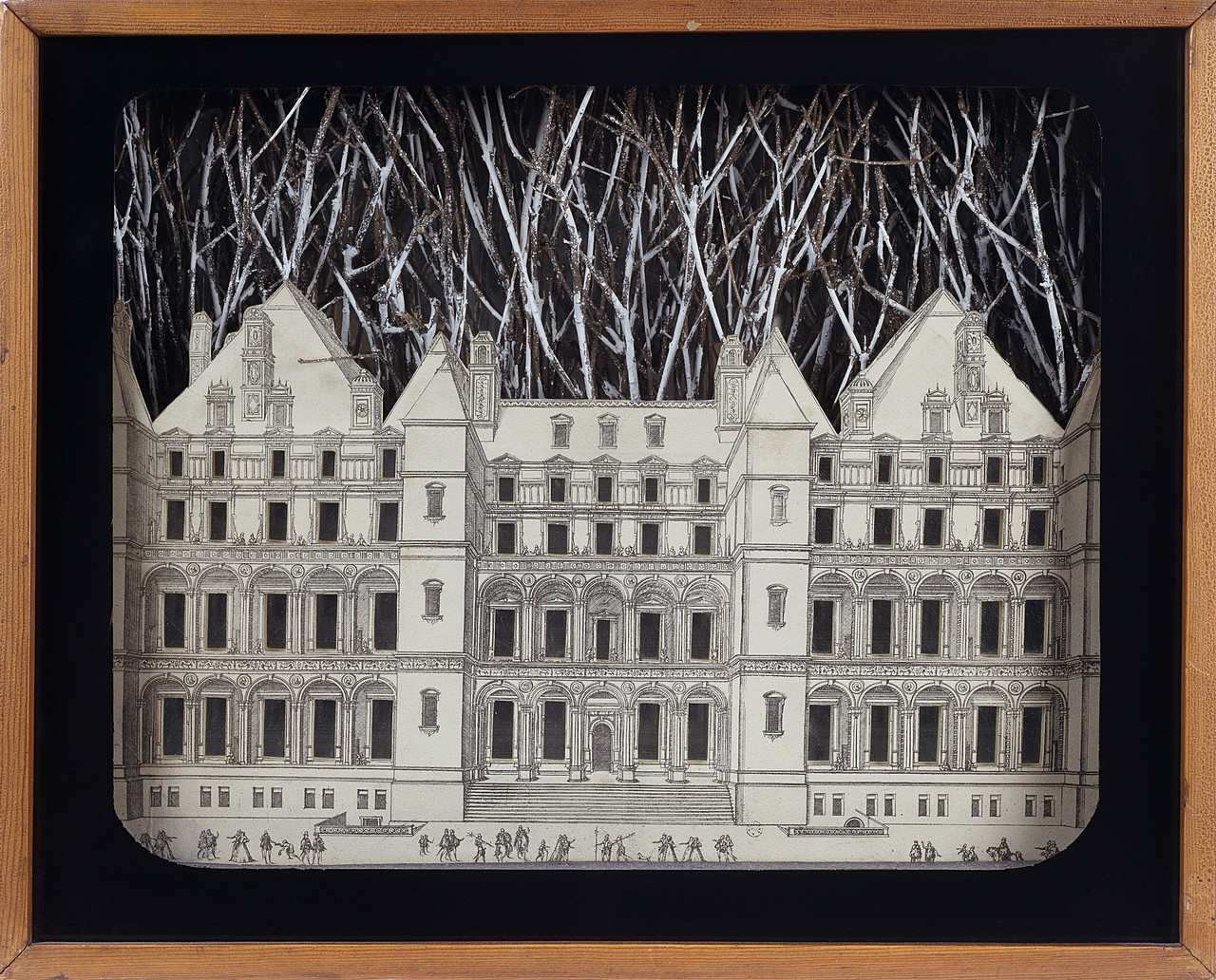In contrast to the cluttered assemblage of juxtaposed objects of varying scales in other boxes, Joseph Cornell here creates a coherent miniaturized world. A black painted border on the surface of the glass frames a white palace and serves as a proscenium that invokes the world of theater and spectacle. The title Setting for a Fairy Tale enhances the stage-model associations of the construction. Cornell’s setting is a reproduction of Jacques Androuet du Cerceau’s engraving, first published in 1576, of the Château de Madrid in Paris. Reproductions of this same engraving appear in at least nine of his palace constructions, for example, Untitled (Pink Palace) of ca. 1946–48. The Peggy Guggenheim work is the first of these boxes, which were created between 1942 and the mid-1950s.
For Cornell, fairy tales had specific associations with the romantic ballet. His favorite ballets included classics such as Swan Lake, The Nutcracker, Ondine, and, of special relevance to the present discussion, Sleeping Beauty. Cornell’s friend Tamara Toumanova, whom he met in 1940, often performed the role of the Princess Aurora in Sergei Diaghilev’s revival of the ballet Sleeping Beauty by Marius Petipa, with music by Pyotr Ilich Tchaikovsky.¹ About 1941 the artist made several objects resembling glass Christmas ornaments that contained cutout pictures of Toumanova dancing Aurora. Certain details of Setting for a Fairy Tale, such as the bramble of twigs suggesting a dense forest around the palace, may derive from the Sleeping Beauty story. Both the balletic rendition of the fairy tale and Cornell’s shadow box conjure up fantasies of romantic love and historic pageantry.
In other constructions Cornell invites the viewer’s imaginative participation in the work through means such as a hatch that may be opened or a tempting crank of a hurdy-gurdy that may be turned. In the present construction the imagined participation is not physical, but psychological and creative. The viewer may be playwright, choreographer, director, and performer in the spectacle of his choice. In a careful scrutiny of the work the mirrored surfaces not only offer the illusion of shimmering glass windows, but also engage the viewer in a multifaceted reflection and discovery of oneself.
Elizabeth C. Childs
